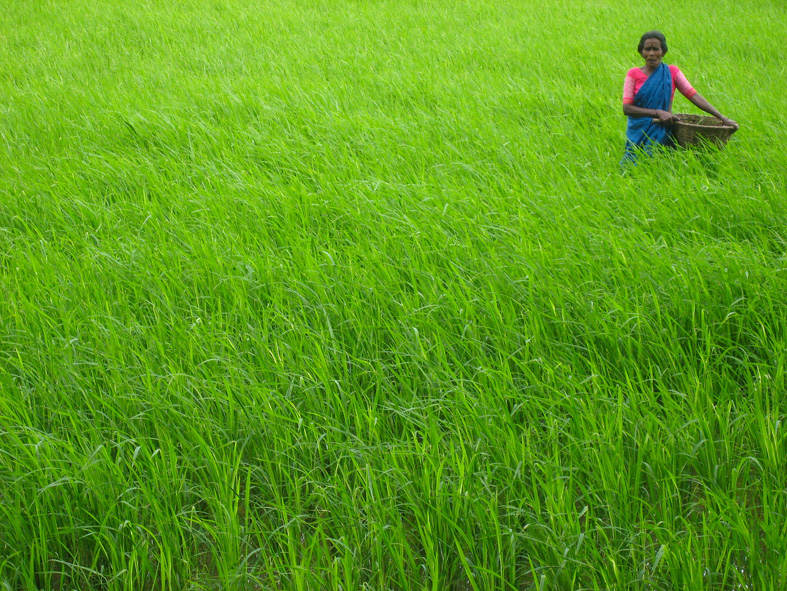
On August 9, 2017, lakhs of people belonging to the Maratha caste poured into the city of Mumbai for a silent march. 57 similar marches had already taken place in the state of Maharashtra, starting from Aurangabad on August 9, 2016. This was the 58th. The rallying cause behind the marches was to protest against the rape and murder of a teenaged girl belonging to the caste in Ahmednagar district in July last year. Other than the rallying cause, the Marathas have demanded quotas in government run as well as aided educational institutions. They also want reservations in government jobs.
Marathas are not the only land-owning caste in the country demanding a reservation in government jobs. Similar demands have been made by the Patels in Gujarat, the Kapus in Andhra Pradesh, the Jats in Haryana and the Gujjars in Rajasthan. The question is why do land-owning castes suddenly want reservation in government jobs, seven decades after Independence?
A major reason for this lies in the fact that the average size of a farmer’s landholding has fallen over the years. As the State of Indian Agriculture Report of 2012-2013 points out: “As per [the] Agriculture Census [of] 2010-11, small and marginal holdings of less than 2 hectare[s] account for 85 per cent of the total operational holdings and 44 per cent of the total operated area. The average size[s] of [the] holdings for all operational classes (small & marginal, medium and large) have declined over the years, and for all classes put together it has come down to 1.16 hectare[s] in 2010-11 from 2.82 hectare[s] in 1970-71.”
Take a look at Figure 1.
Figure 1: Decline in the average size of agricultural landholdings between 1970-1971 and 2010-2011.

Source: State of Indian Agriculture Report, 2012-2013.
The agriculture census is carried out every five years. Hence, the latest available data is as of 2010-2011. The situation would have only gotten worse since then. The trend of falling farm sizes can be clearly seen from Figure 1. As the same piece of land has got divided among more and more family members over the generations, the average holding has fallen dramatically. And this has made agriculture unviable for many in the land-owning castes. Hence, the demand for reservation in government jobs.
The trouble is that the government doesn’t create jobs anymore, neither at the level of state governments nor at the level of the central government. Hence, what will happen once the land-owning castes figure this out? Will they demand reservations in private jobs as well?
The rate of unemployment
The irony is that the huge demand for jobs among the land-owning castes and others is not reflected in India’s rate of unemployment. The Labour Bureau carries out the Annual Employment-Unemployment Survey. This Survey is hardly annual. It was first carried out in 2009-2010. It skipped a year and was carried out for the next three years. It skipped a year again in 2014-2015 and was carried out again in 2015-2016. The 2015-2016 Survey is what will be discussed here.
The Labour Bureau basically measures unemployment using two methods. The first method is called the Usual Principal Status (UPS) approach. In this approach, “the major time spent by a person (183 days or more) is used to determine whether the person is in the labour force or out of the labour force.”
As per this method, the rate of unemployment was just 5 per cent.
The second method is called the Usual Principal and Subsidiary Status (UPSS) approach. Here, “a person who has worked even for 30 days or more in any economic activity during the reference period of [the] past twelve months is considered as employed under this approach.” As per this method, only 3.7 per cent of the workforce was unemployed.
Such low rates of unemployment are hardly surprising given the definitions of unemployment that are being followed. In the first method, an individual might have been unemployed for close to half the year but would still be considered to be employed. In the second method, an individual might not have had a job for 11 months during the year and would be considered employed.
Given this, the rate of unemployment does not tell us anything about the desperate search for jobs. But there is another set of data points that the Labour Bureau puts out, and that rarely makes it to the media. Take a look at Table 1.
Table 1: All-India percentage distribution of persons available for work for 12 months (UPSS approach).

Source: Report on the Fifth Annual Employment-Unemployment Survey, 2016.
Table 1 basically tells us what proportion of the population which is looking for a job all through the year is able to find one. Around 61 out of 100 Indians in the workforce looking for a job all through the year are able to find one. In rural areas, only around 53 out of 100 individuals who are looking for a job all through the year are able to find one. These numbers point towards the huge underemployment of India’s workforce.
This is hardly surprising given that in the last two financial years, agriculture has contributed around 14 per cent to the gross domestic product and employed close to half of the working population. There is a clear mismatch here. Around half the country’s workforce is only contributing 14 per cent of the GDP.
What this means is that there is huge disguised unemployment in the rural areas. Disguised unemployment essentially means that there are way too many people trying to make a living out of agriculture. On the face of it, they seem employed. Nevertheless, their employment is not wholly productive, given that agricultural production would not suffer even if some of these employed people stopped working.
So, the unemployment numbers might not point towards India’s distressing job situation but the underemployment number clearly does. This is also borne out in Figure 2, which has been sourced from a recent report titled OECD Economic Surveys India.
Figure 2:

This report puts the rate of unemployment among India’s youth between the ages of 15 and 29 at more than 30 per cent. These youths are neither employed nor in education or training.
Regular unemployment data
The Fifth Annual Employment-Unemployment Survey was carried out in 2015-2016. It has been close to a year and a half since then and we haven’t had any fresh unemployment data being published by the government.
As Volume 2 of the Economic Survey of 2016-2017 released earlier this month, points out: “The lack of reliable estimates on employment in recent years has impeded its measurement and thereby the Government faces challenges in adopting appropriate policy interventions.” It then lists out 10 ways used by the government to measure unemployment and the problems with them. The problems listed are: “Partial coverage, inadequate sample size, low frequency, long time lags, double counting, conceptual differences and definitional issues, rarely used for the purpose of employment estimation etc.” This, of course, leads to the question why have 10 wrong ways of measuring unemployment and not one right way?
The government has tried to correct this by setting up a task force headed by [now former] NITI Aayog Vice-Chairman Arvind Panagariya to generate timely and reliable employment data. This is a step in the right direction. The tragedy is that this should have happened many years back, even before Narendra Modi took over as the prime minister. Of course, the previous governments are to be blamed for this as well. The Modi government also took more than three years to initiate something to solve this problem.
The trouble is that close to one million Indians are entering the workforce every month. That makes it around 1.2 crore Indians a year. And the government is still struggling with counting the number of the unemployed.
What makes things worse is that most of the individuals who are entering the workforce are not skilled enough. Over the years, the government has tried to correct this by outsourcing skill development to the private sector rather than just depending on the Industrial Training Institutes or the ITIs. But the scale of operation continues to remain very small.
As the Economic Survey referred to earlier points out: “For urban poor, Deendayal Antyodaya Yojana National Urban Livelihoods Mission (DAYNULM) imparts skill training for self and wage-employment through setting up self-employment ventures by providing credit at subsidized rates of interest. The government has now expanded the scope of DAY-NULM from 790 cities to 4,041 statutory towns in the country. So far, 8,37,764 beneficiaries have been skill-trained [and] 4,27,470 persons have been given employment.” When one million Indians are entering the workforce every month, this is not even a drop in the ocean.
Other data points
While we may not know the right rate of unemployment on a regular basis, there is enough other data that suggests that job creation is not happening. Take a look at Figure 3. It basically plots the bank lending to industry.
Figure 3:

Source: Reserve Bank of India.
The lending carried out by banks to the industry has fallen over the years. In fact, in 2016-2017, the lending to industry shrunk by more than Rs 50,000 crore. This basically means that on the whole, the banks did not lend a single new rupee to the industry in 2016-2017. The reason for this is very straightforward. The industry has defaulted on its past loans and banks are no longer in the mood to lend.
This also shows us that the industries are no longer borrowing and expanding and creating jobs in the process. Of course, banks are not the only source of borrowing for industry. If we were to look at the overall flow of financial resources to the commercial sector it was down by around 11 per cent in 2016-2017 in comparison to a year earlier (Source: RBI Monetary Policy Report April 2017).
Over and above this, demonetisation had a huge negative impact on jobs in the informal sector. The Bharatiya Mazdoor Sangh (a trade union affiliate of the BJP) estimated that nearly 2.5 lakh units in the unorganised sector were closed down. Then there is the latest Reserve Bank of India (RBI) Consumer Confidence Survey. More people now believe that the employment conditions have worsened over the last year.
The leaders of the Bharatiya Janata Party like to claim that crores of jobs have been created through Mudra (Micro Units Development and Refinance Agency Bank) loans given out by banks. In 2015-2016 and 2016-2017, a total of 7.46 crore individuals were given Mudra loans. Hence, 7.46 crore jobs were created is the logic that is offered. But this is something that the CEO of Mudra does not confirm. As he told NDTV recently, when asked how many jobs had these loans created: “We are yet to make an assessment on that… We don’t have a number right now, but I understand that NITI Aayog is making an effort to do that.”
The point being India has a serious jobs problem and we aren’t doing much to tackle it. And there are going to be no acche din without jobs.
The column originally appeared on Newslaundry on August 15, 2017.



